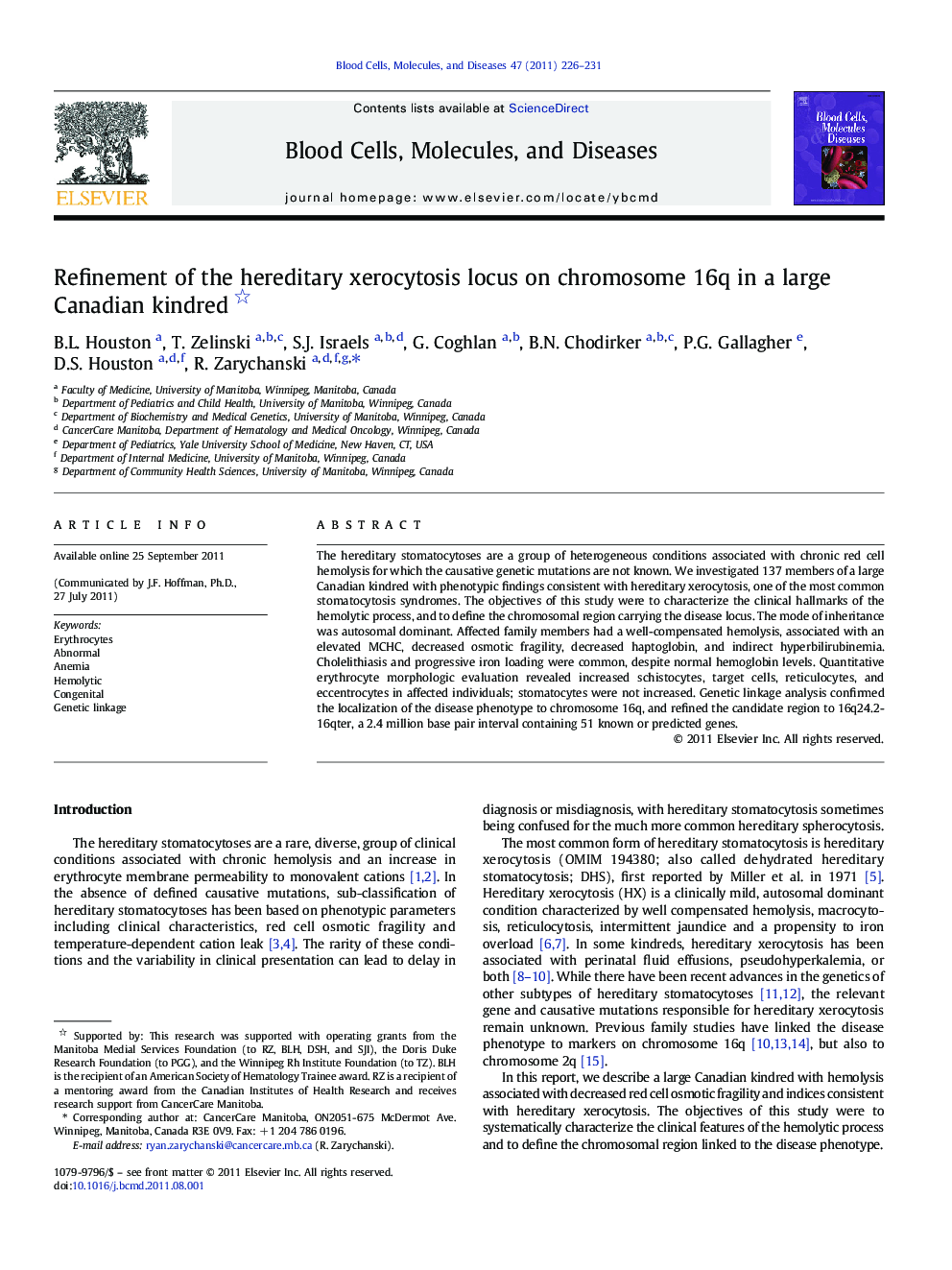| Article ID | Journal | Published Year | Pages | File Type |
|---|---|---|---|---|
| 2827763 | Blood Cells, Molecules, and Diseases | 2011 | 6 Pages |
The hereditary stomatocytoses are a group of heterogeneous conditions associated with chronic red cell hemolysis for which the causative genetic mutations are not known. We investigated 137 members of a large Canadian kindred with phenotypic findings consistent with hereditary xerocytosis, one of the most common stomatocytosis syndromes. The objectives of this study were to characterize the clinical hallmarks of the hemolytic process, and to define the chromosomal region carrying the disease locus. The mode of inheritance was autosomal dominant. Affected family members had a well-compensated hemolysis, associated with an elevated MCHC, decreased osmotic fragility, decreased haptoglobin, and indirect hyperbilirubinemia. Cholelithiasis and progressive iron loading were common, despite normal hemoglobin levels. Quantitative erythrocyte morphologic evaluation revealed increased schistocytes, target cells, reticulocytes, and eccentrocytes in affected individuals; stomatocytes were not increased. Genetic linkage analysis confirmed the localization of the disease phenotype to chromosome 16q, and refined the candidate region to 16q24.2-16qter, a 2.4 million base pair interval containing 51 known or predicted genes.
